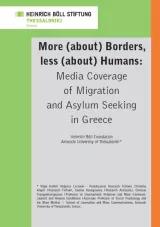The media play a central role in informing the public about global, national and local events, and represent a powerful means of shaping opinions and policies. Indeed, an example of the effect of the media on political decisions and public opinion can be represented by a photograph that changed public opinion concerning the so-called refugee crisis of 2015. This photograph, published on 2 September 2015, is of a young 2-year-old boy, Aylan Kurdi, who died on a beach in Turkey; it was a photo that quickly went around the world and became the symbol of the migrant drama.

The change in public opinion was immediate, with “welcome refugees” or “shame” becoming the most popular hashtags on social networks. Those hashtags using “refugees” instead of “migrant” also signalled a shift in the language that can underline a twist in the representation of people on the move. Indeed, using the term “refugees” calls the international politician to their responsibilities toward those populations compared to the use of the term “migrant”, which does not lead to favourable political involvement. The political arena has also seen a change in migration policy in the UK, where it has been announced that 20,000 Syrians will now be resettled, and where Alan Kurdi’s picture was referenced and mentioned by politicians. Finally, a solidarity effect affected most of the continents, which until now were not so favourable to the reception of people on the move, through numerous initiatives of civil society.
People on the move as “others”
Therefore, media coverage of migration issues played an important role in informing public opinion and contributing to the construction of the collective perception of migration. It is precisely because of this important role of informing public opinion that the media must be critically assessed. Consequently, this research focuses on the media coverage of migration in Bosnia- Herzegovina and Croatia. The research presents the range of narratives that predominate in media coverage of migration in Bosnia-Herzegovina and Croatia, via a content analysis of articles related to the topic. The sample consists of 218 relevant newspaper articles (from Avaz, Nezavisne Novine, Jutarnji list and 24Sata) between 2015 and 2021. The analysis provides insight into the dynamics of media coverage of migration in these two countries, as well as a list of major patterns seen in the general media coverage.
The analysis highlights how mainstream media construct people on the move as “others”. This is done primarily by associating people on the move with a constant narrative based on stories related to crime, as well as them being represented as a threat to the country’s population, health and culture. In addition, people on the move are depicted as dangerous criminals, barbarians and uncivilised. This negative portrayal of people on the move engenders fear and anxiety, and reflects the image of a “dangerous other” — the people on the move — as opposed to an “us” — the citizens — who must be protected from threat. The feeling of a need for protection is reinforced by the constant use of numbers without contextualization. Those numbers, which are represented without comparing them with other data, stimulate an effect of imminent invasion. This effect of imminent invasion was also underlined using the image of water, which reinforces the feeling of an imminent catastrophe by the assimilation of migration with a climate catastrophe.
Migrants or refugees?
The study underlined that the media agree on the use of the term migrant, but on several occasions, they also used the term illegal migrant in situations where the term refugee would have been more appropriate. In this context, the terminology directly modulates the reaction of public opinion toward the population under coverage. The negative connotations that are currently associated with the term migrants, and in particular illegal migrants, can have a strong influence on the perception of people on the move by the audience, as well as on the political decisions.
Voiceless
People on the move are the central object of interest in this study, but they are also invisible. Indeed, the analysis has shown that people on the move themselves rarely get a voice in the articles to tell their stories. Besides, the articles rarely provide insights about the reality of their daily lives or contextualisation for the reason for their departure, and are even less informative about who they are. The lack of contextualization and information about people on the move prevents the audience from understanding the situation lived by the people on the move and therefore does not allow for the forming of an empathetic and emotional attachment and increases the likelihood that audiences will be receptive to the propaganda against people on the move.
People on the move as a threat
Migration is dominantly presented as a threat to the nation in terms of security (dangerous terrorists) and culture (uncivilised invaders), but also in terms of health in the national context. In general, people on the move are primarily portrayed as a problem, expressed in a large variety of negative and hateful narratives (terrorism, COVID-19 propagators, etc.).
Lack of gender sensitivity
In the different articles, gender was mostly not specified. Most of the time, people on the move were described as a whole group or in numeric terms. When gender was specified, it was only with reference to women and men, while LGBTQI+ were completely excluded from reporting. In the articles in which gender was specified, women were less represented than men and children. Whereas women and children were often used to provide a human rights perspective on the issue, men were often mentioned in relation to stories of crime and violence. Consequently, existing prejudicial stereotypes based on gender are reproduced, namely men as criminals or sex offenders and a general victimisation of women.
This analysis does not claim to be exhaustive; rather, the results are intended to help provide important insights into media coverage of migration in Bosnia-Herzegovina and Croatia. The results confirm the general picture painted by the European media of people on the move (Myria Georgiou, 2017). As the war develops in Ukraine, it will be interesting to observe whether and how people on the move from Ukraine have changed the perspective of media coverage on this topic.


